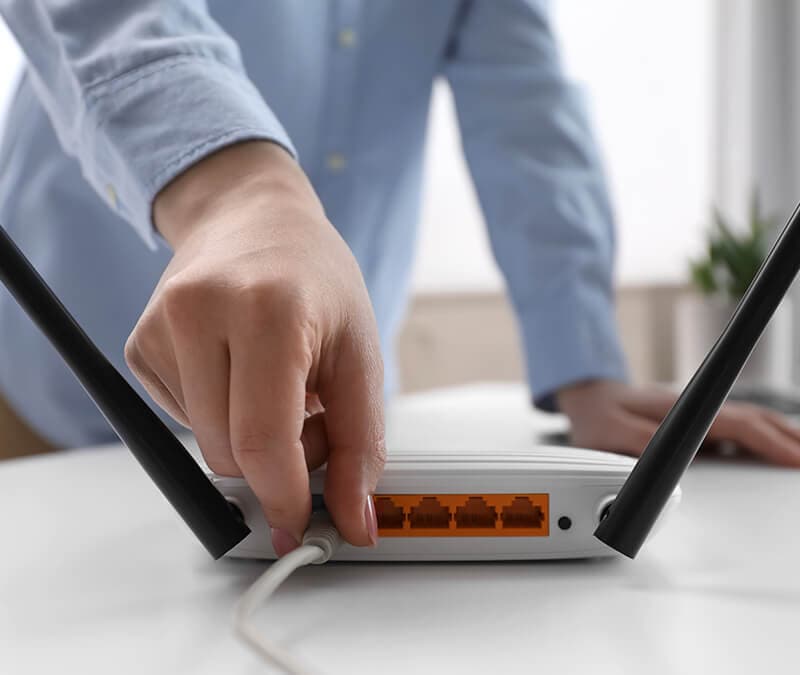The future of IoT: 10 predictions about the Internet of Things
The internet of things is the umbrella term for anything that connects to the internet. By 2025, it is estimated that there will be more than to 21 billion IoT devices. Cybersecurity will continue to be a big concern as more devices will connect directly to the 5G network.


Try Norton 360 FREE 7-Day Trial* - Includes Norton VPN
7 days of FREE* comprehensive antivirus, device security and online privacy with Norton VPN.
Join today. Cancel anytime.
*Terms Apply
The internet landscape is burgeoning. It’s not just about computers, laptops, tablets, and smartphones anymore. Now a multitude of devices are internet-connected. The list of “smart” devices includes washing machines, robotic vacuum cleaners, door locks, toys, and toasters. The Internet of Things is the umbrella term — and, yes, you can now buy a smart umbrella — for anything that connects to the internet.
What is the Internet of Things, or IoT?
The Internet of Things — IoT, for short — is made up of devices that connect to the internet and share data with each other. IoT devices include not only computers, laptops and smartphones, but also objects that have been equipped with chips to gather and communicate data over a network.
The range of existing and potential Internet of Things devices is enormous. Consumers often use their smartphones to communicate with IoT devices, whether it’s a smart speaker or home thermostat. Connected devices offer convenience, like helping you make a grocery list, or savings, like when you turn down the heat at home while you’re on vacation.
Here are 10 predictions about the future of IoT.
1. By 2025, it is estimated that there will be more than to 21 billion IoT devices
A quick look back shows where IoT devices are going. Consider: In 2016, there were more than 4.7 billion things connected to the internet, according to IOT Analytics. Fast-forward to 2021? The market will increase to nearly 11.6 billion IoT devices.
2. Cybercriminals will continue to use IoT devices to facilitate DDoS attacks
In 2016, the world was introduced to the first “Internet of Things” malware — a strain of malicious software that can infect connected devices such as DVRs, security cameras, and more. The Mirai malware accessed the devices using default password and usernames.
What happened next? The malware turned the affected devices into a botnet to facilitate a Distributed Denial of Service (DDoS) attack, which aims to overwhelm websites with internet traffic. The attack ended up flooding one of the largest website hosting companies in the world, bringing a variety of major, well-known websites and services to a halt for hours.
This particular strain of malware is called “open source,” which means the code is available for anyone to modify.
3. More cities will become “smart”
Consumers won’t be the only ones using IoT devices. Cities and companies will increasingly adopt smart technologies to save time and money.
That means cities will be able to automate, remotely manage, and collect data through things like visitor kiosks, video camera surveillance systems, bike rental stations, and taxis.
4. Artificial intelligence will continue to become a bigger thing
Smart home hubs, thermostats, lighting systems, and even coffee makers collect data on your habits and patterns of usage. When you set up voice-controlled devices, you allow them to record what you say to them and store those recordings in the cloud. In most cases, the data is collected to help facilitate what is called machine learning.
Machine learning is a type of artificial intelligence that helps computers “learn” without someone having to program them. The computers are programmed in a way that focuses on data that they receive. This new data can then help the machine “learn” what your preferences are and adjust itself accordingly. For instance, when a video website suggests a movie you might like, it’s likely learned your preferences based on your past choices.
5. Routers will continue to become more secure and smarter
Because most consumer IoT devices reside in the home and can’t have security software installed on them, they can be vulnerable to attacks. Why? A lot of manufacturers work to get their IoT products to market quickly, so security may be an afterthought. This is where the home router plays a very important role. The router is essentially the entry point of the internet into your home.
While many of your connected devices cannot be protected, the router has the ability to provide protection at the entry point. A conventional router provides some security, such as password protection, firewalls, and the ability to configure them to only allow certain devices on your network.
Router makers will likely continue to seek new ways to boost security.
6. 5G Networks will continue to fuel IoT growth
Major wireless carriers will continue to roll out 5G networks. 5G — fifth-generation cellular wireless — promises greater speed and the ability connect more smart devices at the same time.
Faster networks mean the data accumulated by your smart devices will be gathered, analyzed and managed to a higher degree. That will fuel innovation at companies that make IoT devices and boost consumer demand for new products.
7. Cars will get even smarter
The arrival of 5G will shift the auto industry into a higher gear. The development of driverless cars — as well as the connected vehicles already on the road — will benefit from data moving faster.
You might not think of your car as an Internet of Things device. But new cars will increasingly analyze your data and connect with other IoT devices — including other high-tech vehicles on four wheels.
8. 5G’s arrival will also open the door to new privacy and security concerns
In time, more 5G IoT devices will connect directly to the 5G network than via a Wi-Fi router. This trend will make those devices more vulnerable to direct attack.
For home users, it will become more difficult to monitor all IoT devices, because they will bypass a central router.
On a broader scale, the increased reliance on cloud-based storage will give attackers new targets to attempt to breach.
9. IoT-based DDoS attacks will take on more dangerous forms
Botnet-powered distributed denial of service (DDoS) attacks have used infected IoT devices to bring down websites. IoT devices can be used to direct other attacks.
For instance, there may be future attempts to weaponize IoT devices. A possible example would be a nation shutting down home thermostats in an enemy state during a harsh winter.
10. Security and privacy concerns will drive legislation and regulatory activity
The increase in IoT devices is just one reason security and privacy concerns are rising.
In mid-2018, the European Union implemented the General Data Protection Regulation. GDPR has led to similar security and privacy initiatives in several nations around the world. In the United States, California recently passed a tougher privacy law.
What does this mean for you? Such efforts could give you more control over your data.

Try Norton 360 FREE 7-Day Trial* - Includes Norton VPN
7 days of FREE* comprehensive antivirus, device security and online privacy with Norton VPN.
Join today. Cancel anytime.
*Terms Apply
Editorial note: Our articles provide educational information for you. Our offerings may not cover or protect against every type of crime, fraud, or threat we write about. Our goal is to increase awareness about Cyber Safety. Please review complete Terms during enrollment or setup. Remember that no one can prevent all identity theft or cybercrime, and that LifeLock does not monitor all transactions at all businesses. The Norton and LifeLock brands are part of Gen Digital Inc.





Want more?
Follow us for all the latest news, tips, and updates.